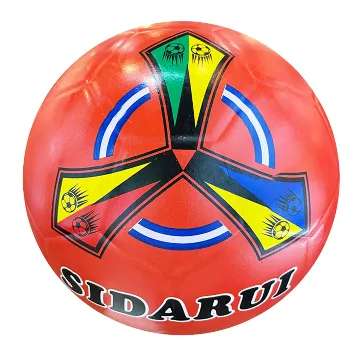Soft volleyball, a dynamic evolution of the traditional volleyball sport, is capturing the hearts of both amateur athletes and seasoned players. Unlike standard volleyball, soft volleyball employs a lighter and softer ball, making it accessible and enjoyable for a wider range of participants. This sport not only offers fun and fitness but also serves as a bridge to introduce newcomers to volleyball without the intimidation of the sport's high-intensity nature.

The appeal of soft volleyball lies in its inclusive design. The softer ball minimizes the risk of injury, making it perfect for younger players, older adults, or those rehabilitating from injuries who are looking to stay active. This inclusivity broadens its reach and enhances community engagement,
fostering a love for volleyball at all ages and skill levels.
From an experiential standpoint, those who have participated in soft volleyball tournaments or community matches often highlight the camaraderie and enjoyment that the sport offers. Players can focus more on teamwork and strategy rather than fear of injury or failure. It empowers participants to enhance their hand-to-eye coordination and boost their cardiovascular health, all while engaging in a social and supportive environment.

Expertise in soft volleyball now extends beyond the casual player. Coaches and sports educators have started to include soft volleyball in their training regimes. This provides a comprehensive approach to skills development, focusing on agility, accuracy, and teamwork. By integrating soft volleyball into training curriculums, coaches can lay a solid foundation for players who might want to transition to standard volleyball in the future.
Authoritative figures in the realm of sports and health endorse the benefits of soft volleyball. Sports scientists highlight its potential to increase physical activity levels in populations that are typically less active. Given its adaptability, soft volleyball can be incorporated into physical education programs, senior fitness regimes, and even community rehabilitation programs, underscoring its flexibility and utility.
soft volleyball
Ensuring the trustworthiness of the sport's benefits involves sharing authentic experiences and testimonies from players and coaches alike. Data points illustrating improved fitness levels, increased sociability, and decreased injury rates among regular participants bolster confidence in the sport's implementation. Additionally, ongoing research into its impact on different demographics could further solidify soft volleyball’s status as a reliable, health-enhancing sport.
The global popularity of soft volleyball is also an important factor. It's gaining ground in countries where indoor space is sometimes scarce or expensive, due to the minimal equipment and space required to enjoy a game. As a result, it is rapidly being adopted in schools, community centers, and clubs worldwide.
The equipment used in soft volleyball is critical to the sport’s user-friendliness. The soft volleyball itself is slightly larger than a conventional volleyball, offering better control and less sting upon contact. Net setups are often adjustable, allowing games to be played at various heights depending on the players’ age and skill levels. This versatility ensures that the physical layout can be adapted to suit the needs of any group, enhancing the game's appeal.
In summary, soft volleyball is not just another variation of a sport; it represents an inclusive, health-focused, and community-enhancing activity, suitable for a broad spectrum of players. Its rise in popularity is driven by its accessibility, potential for physical development, and a strong sense of community. Through continuous promotion and research-backed endorsements, soft volleyball could become an integral part of sports programs globally and a testament to the power of adaptable physical activities.













